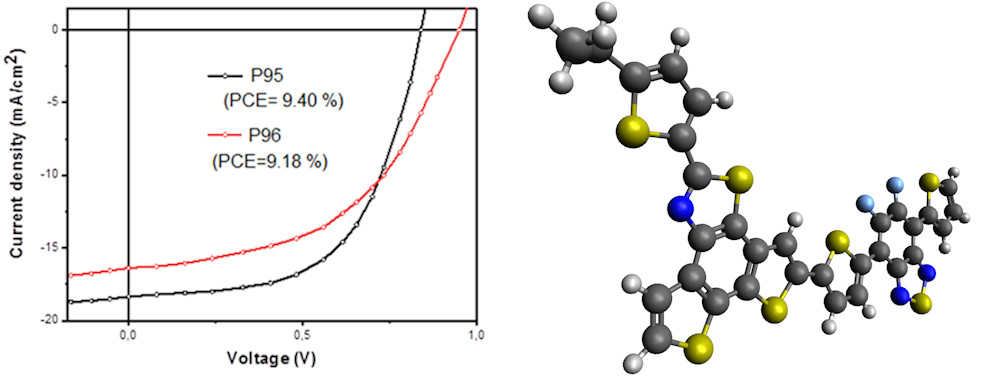ABSTRACT
In this work, two D–A conjugated polymers having same fluorinated benzothiadiazole acceptor and thiophene linker and different donor units (2,8-dibromo-4,6-bis9n-octylthiophene-2-yl)benzo(2,1-b:3,4-b’:5,6-c”] trithiophene for P95 and 5,8-dibromo-2-[5-2(-ethylhexyl)thiophene-2yl]-1H bisthieno[3,2-e:2‘,3‘-g]benzothiazole for P96 were synthesized. These polymers have complementary absorption spectra with both phenyl C71 butyric acid methyl ester (PC71BM) and non-fullerene acceptor (PDIF) and energy levels for the exciton dissociation and charge transfer. After the optimization, the P95:PDIF and P96:PDIF based polymer solar cells showed overall PCE of showed 9.40% and 9.18% with energy loss of 0.54 eV and 0.64 eV, respectively which is higher than that of PC71BM counterpart (8.34% and 7.82% for P95 and P96, respectively). The higher values of short circuit current (Jsc) and open circuit voltage (Voc) and related to strong absorption of PDIF in 400–600 nm wavelength region and shallow value of lowest unoccupied molecular orbital (LUMO) energy level of PDIF. The higher value of power conversion efficiency of polymer solar cells based on P95, for both PC71BM and PDIF is related to the broader absorption spectra of P95 (low optical bandgap) as compared to P96 and more balanced charge transport due to higher hole mobility for P95 based active layer. These results demonstrate that the electron donating ability of donor unit in the D–A conjugated polymers may affect the photovoltaic response of the polymer solar cells and provide the guidance for the design of high efficiency photovoltaic materials.


